Triathlon’s greatest rivalries – past and present
Exploring some of triathlon's past and present rivalries
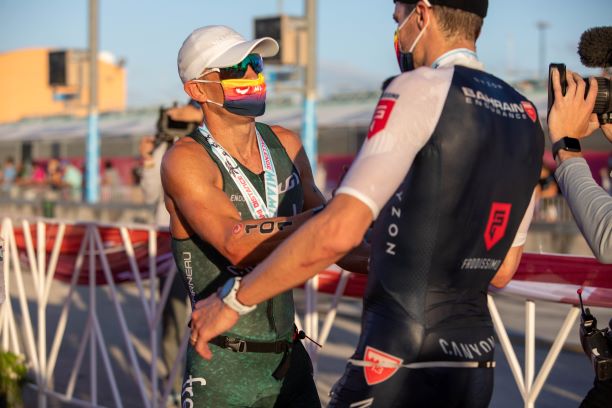 Photo by:
Photo: Challenge Miami/ Bruce Velarde
Photo by:
Photo: Challenge Miami/ Bruce Velarde
Though Covid-19 put a damper on triathlon racing last year, there were still some bright spots. Triathletes who enjoyed training thrived, as they had no distractions to get in the way of huge training weeks and epic adventures. Others to make the most of the COVID-19 pandemic situation were professional triathletes such as Lionel Sanders, Paula Findlay and Eric Lagerstrom. They showcased their social media skills to attract attention and build their brands.
And then there was the Professional Triathletes Organization (PTO). Without question, they emerged as a relevant force in our sport. The PTO put on the biggest show of the year at Challenge Daytona (the PTO 2020 Championship) and also offered financial support to the triathlon community through its COVID-19 Triathlon Relief Fund and Annual Bonus Program. With good deeds and great live coverage, interest in our sport was on the rise at the end of last year. There is, however, a long way to go before triathlon becomes a mainstream spectator sport like golf or tennis.
Perhaps one of the greatest untapped potentials that triathlon has in promoting itself and its athletes is through rivalries. Rivalries are a potent force in sports and Canada has had plenty, especially in hockey – think of the Toronto Maple Leafs and the Montreal Canadiens, the Calgary Flames and the Edmonton Oilers.
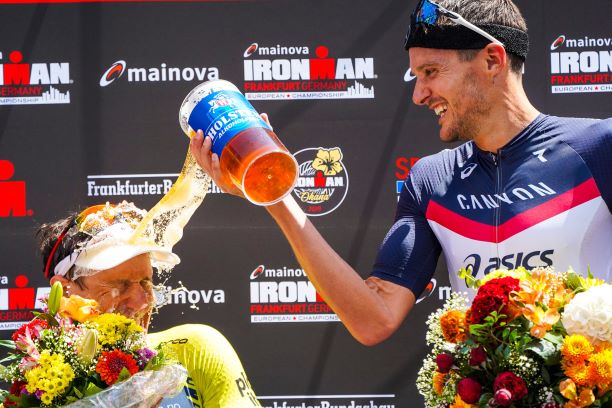
What is a rivalry?
Rivalries and competition have always been closely tied. In sports, a rivalry features two teams or individuals with some nasty history between themselves, with each having an equal chance of defeating the other. Sports rivalries appeal to fans by adding conflict and passion. When competitors have an emotional incentive to defeat the other, fans get swept up in the excitement. And, when the two sides’ emotions run high on the playing field, well, that just makes for good spectacle and high ratings.
Related: Celebrating Kona – looking back at some of the classic moments from the Ironman World Championship

The Rarity of Triathlon Rivalries
As effective as rivalries are for generating interest in our sport, triathlon has not seen as many significant rivalries as other sports.
One possible reason may have to do with the training and racing environments. Most triathletes tend to train alone, in small groups, or with their cute dogs. Compare the environment in a testosterone-filled hockey or rugby locker room to a swimming pool and you can see how a team-sports environment can be a more likely place for braggadocio and a culture of crushing the competition.
Another reason for the lack of rivalries in triathlon may be tied to the power of geography. In a hockey rink, or on a basketball court, competitors don’t face fierce crosswinds or soul-sapping heat. When an athlete’s chance of success is highly influenced by Mother Nature, there’s more concern on overcoming those factors than on crushing a specific competitor. Any time Georges St. Pierre stepped into the Octagon with his rival, Matt Hughes, he didn’t have to worry about being stung by a jellyfish first. Climbing into the ring with Mother Nature produces a more humble athlete, one that is less ego-driven, and less motivated to develop rivalries.
A third reason for the lack of rivalries in triathlon, especially in long-course, may be the infrequent opportunities competitors have to compete against each other. In an average season, the Calgary Flames and the Edmonton Oilers may face off against each other four times. Multiply that by a few years and you have a dozen “Battles of Alberta” where goals are scored, blood is shed and rivalries are galvanized. And then, of course, there are the playoffs, where teams can meet up to seven times in two weeks. Compare that to the annual shoot out at Kona, and perhaps a half-distance race or two, and you can see that long-course triathletes can’t clash on a frequent enough basis to fuel a genuine rivalry.
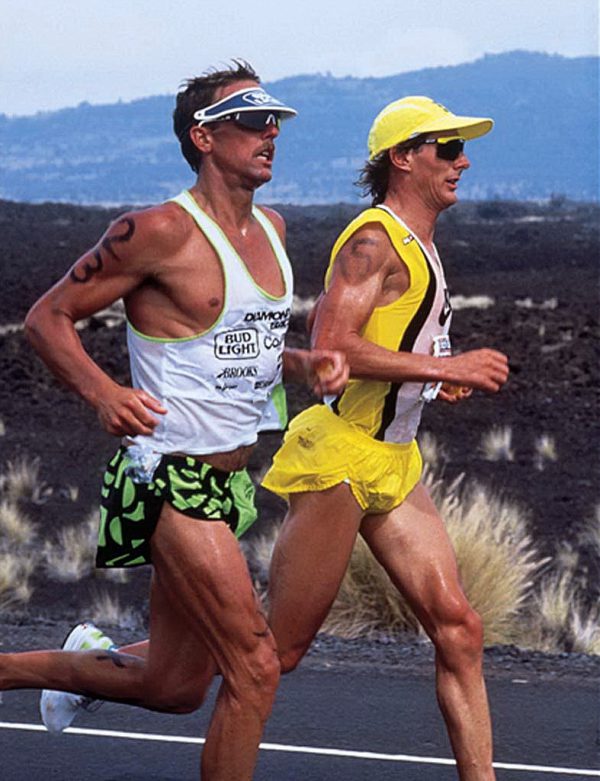
Triathlon Rivalries of the Past
What triathlon has lacked in the sheer number of rivalries it has made up for in intensity. Nothing says rivalry more than war, and the “Ironwar” at the 1989 Ironman World Championship was a battle of the ages as Mark Allen finally beat the man whose name had become synonymous with Ironman – Dave Scott. Also during this era, an equally intense rivalry existed between Paula-Newby Fraser and Erin Baker. Perhaps the greatest rivalry in the sport was the years-long Xterra feud between Canadian Melanie McQuaid and American Jamie Whitmore. They frequently faced each other in the early 2000s, decimating the rest of the field and dominating the top of the podium.
Just over a decade ago two-time Ironman world champion Chris McCormack used rivalry and pyschological tactics to his advantage. Macca would intentionally ruffle the feathers of his competition, especially those at the top who stood in the way of his victory. Initially, he targeted German champion, Norman Stadler, with taunts and smack talk. When Craig Alexander became the King of Kona, McCormack set his sites on him, conspiring with others to bike extra hard in the hopes of trashing Alexander’s running legs.
Perhaps the Canadian triathlete best equipped to comment on rivalries is Victoria’s Brent McMahon. As a veteran of Canada’s Olympic Team, as well as a multiple Ironman and Xterra champion, he has a unique vantage point. McMahon says there are different types of rivalries when it comes to Olympic-distance racing. Within a country, athletes are trying to be the best so they can represent their country at the Olympics. To get an Olympic spot, the top contenders race each other frequently. In McMahon’s case, that rivalry was with Kyle Jones. Secondly, McMahon explains, there are rivalries on the World Triathlon circuit where athletes are competing regularly. Thirdly, there are rivalries at the very top, with athletes vying for the overall win either at a world cup race, the world championships, or at the Olympics.
And just like his fellow Victorian, Melanie McQuaid, McMahon had a long-running rivalry on the Xterra circuit as well. In one particularly foul weather race, McMahon and his rival, South Africa’s Conrad Stoltz, were out of contention for the top five, but that didn’t diminish their desire to beat the other, pushing each other to the point of crashing and both of them winding up in the hospital after finishing the race.
Related: Performances of the decade: Daniela Ryf smashes the Kona course record
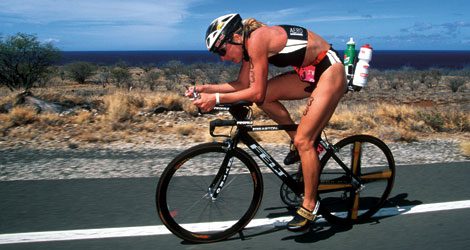
Rivalries of Today
With the top of the podium at Kona occupied by either Jan Frodeno or Patrick Lange over the past years, it seems like there is more competition for second or third place. Two of the most popular combatants are Canada’s Lionel Sanders and Germany’s Sebastian Kienle. Even though both have defeated each other in competition, and had words to say about each other in the media, Kienle asserts their relationship is more a case of mutual respect, rather than a traditional rivalry. The German, however, does admit to having rivalries with other athletes, saying there are times that he wants to beat a specific athlete almost as much as he does in winning the race.
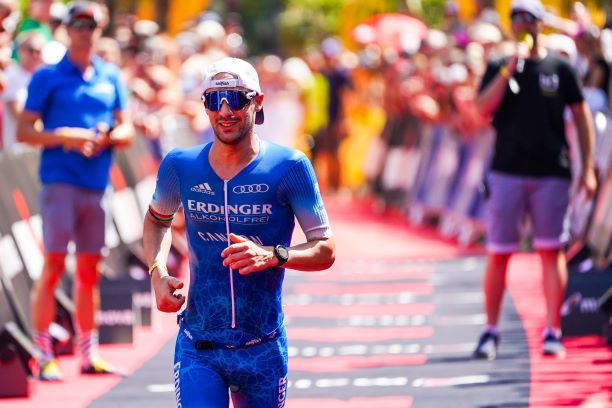
Rivalries of the Future
The recent PTO World Championship race provided a preview of what future rivalries we may see. The rivalry may not be between specific athletes, but between two types of triathletes, the short-course speedsters and the long-course thoroughbreds. The good-natured smack talk and hype featured on triathlon media leading up to the PTO 2020 Championship in Daytona generated interest in the sport and, after Canada’s Paula Findlay Norway’s Gustav Iden to the wins, it only provided more fuel to the feuds of the future.
Another possibility for rivalries may come as a result of the PTO’s Collins Cup, an event that will pit athletes from the USA, Europe, and the rest of the world (Internationals) against each other. Could the Collins Cup be an effective showcase to promote the sport? If racing returns to normal in 2021, we will find out in August.
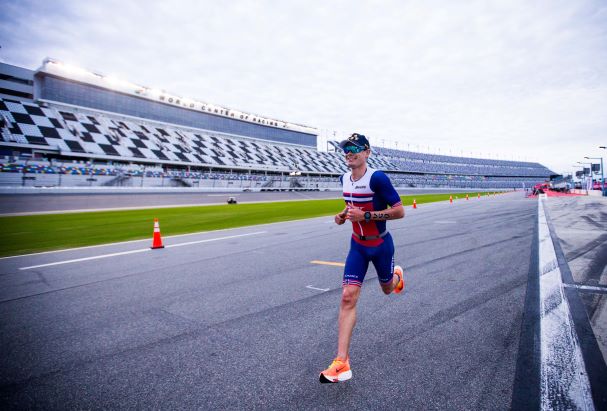
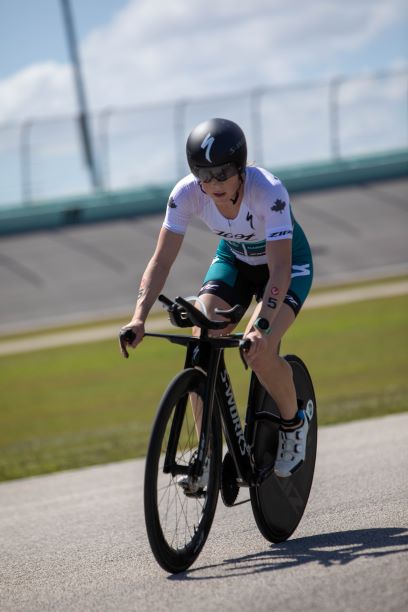
What’s in it for you?
As valuable as rivalries may be in creating more spectator interest in the sport, perhaps they are even more valuable for the age-group triathlete. If you’ve ever had a competitor close to you in your age group, you know how motivating they can be. Far from being a negative and adversarial relationship, these clashes are beneficial for you both. They can motivate you to train more effectively, get more rest, eat better, or push yourself to new depths of pain as you battle it out to the finish line. In your pursuit for victory, both of you win and, in the words of running coach Franz Stampfl, “in the achievement of greater performances, of beating formidable rivals, the athlete defeats fear, and conquers himself.”
This story originally appeared in the May issue of Triathlon Magazine Canada. Kevin Heinz is a regular contributor to the magazine.
